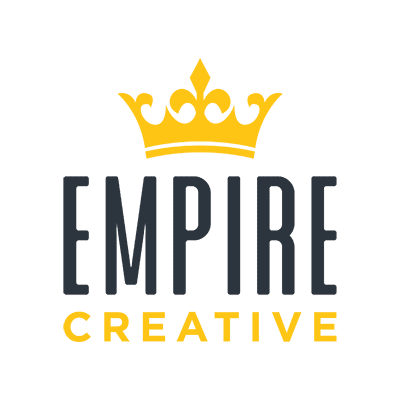Brochure, Booklet, Folder, Flyer, Pamphlet…

Different types of Brochure Designs and Formats are easy to miss-understand.
Conversations about printing needs often becomes confusing for someone not in the printing and design business when the terms are not understood correctly. We at Empire Creative Marketing strive to make your job easier. Helping you to understand correct terms and definitions of brochure designs and formats is key to ensuring printing projects flow smoothly and there are no unexpected costs from misunderstanding and miscommunications.
Types of Brochure Designs and Formats:
A Tri-fold brochure is one of the most common ways to fold, design and print a brochure. Tri-fold brochures are easily accepted by clients, versatile and tempting to open; thus making them suitable for high-impact designs and great for most basic marketing campaigns.
The most basic way to fold a tri-fold brochure is to fold the right panel inwards first, and the left panel folds inwards to sit on top of the right panel. Tri-folds end up with 6 panels to place information on that are almost the same size. There are many other speciality ways to fold and design a tri-fold borchure for even more impact.
The tri-fold brochure adapts to any size, so many companies design large tri-folds for an even more professional, corporate-looking brochure. The stock paper used for these large brochures is of higher quality than the standard tri-fold, which makes them slightly more expensive to print, but often more budget friendly than a specialty brochure.
Bi-Fold Brochures are found among us every day. They are one of the most popular and widely varied brochure types around, but are more formal than a tri-fold brochure. They are usually intended for product presentations, catalogues, institutional introductions, tradeshows, corporate meetings, etc.
Bi-fold brochures are made from one or more sheets of paper that are folded in half. The fold line usually runs perpendicular to the longest side of the sheet which then forms 4 panels out of a single sheet of paper: a front-cover, a back-cover, and two internal pages. Multiple bi-fold brochures inside of each other are booklets, which are discussed below.
Bi-Folds can be designed with many purposes and are the basic design of presentation folders and booklets.
Presentation Folders are the most common folders, and are actually a type of bi-fold brochure. Folders are ideal because they are professional, reliable and organized for presenting business material. Folders are great for basically any promotional use, but also provide protection for the pieces inside them while keeping material organized. Printed sheets of paper that go inside a folder are called inserts.
Folders can be configured to different clients according to their interests by adding or removing inserts. Folders can have have bottom pockets on one or both sides. Pocket shape can vary and original designs can be created to enhance company branding. Special areas can be designed into the pockets for inserting business cards.
Inserts are flyers designed specifically to coordinate with the folders. Inserts allow the folders to be configured for each particular client, giving emphasis in a certain topic, service or product. Inserts are usually used as sales sheets, spec sheets, or just as informative or promotional pieces.
Booklet’s are, technically speaking, sets of multi-page, bi-fold brochures that are bound together using a variety of different methods. The word “brochure” is often used as a synonym for “booklet,” but this is incorrect. A brochure is a single piece of paper whereas the term “booklet” refers to multiple brochures being bound together. Most catalogs, corporate profiles and presentations are booklets.
Booklets are usually printed on high quality stock, and their morphology allows eye-catching, impressive designs. The front and back covers are sometimes printed on a thicker stock to create an even more professional feel.
Booklet Binding methods
Since booklets combine more than once sheet of paper, these sheets need bound together. The binding techniques vary depending on the amount of paper and how professional the client needs the booklet to look.
Saddle-stitch (stapling) is by far the most popular booklet binding method. It’s cheap, looks nice and it’s fast for printers. Printers will use stapling for brochures whenever possible, even up to 40+ pages, depending on paper thickness. Booklets with a high page count are bound using other more sophisticated binding techniques, usually “wire-o” binding or “perfect” binding.
“Wire-O” or spiral bound is popular for inter-company presentations as it is practical, but not very formal.
“Perfect” bound is the binding technique used for most books, and is also known as adding a “spine”. This is the ideal choice for brochures and catalogs with a high page count that need to be formal, professional and long lasting.
Flyers are communication pieces designed for mass distribution at low cost, and are often referred to as pamphlets, leaflets or circulars. Flyers are usually a plain single sheet of paper without any fold and smaller in size than a regular size paper. While often printed in full color, some are printed in only one or two colors and they can be single or double-sided to keep the costs within an appropriate budget. Flyers are ideal for promotions or campaigns where the target audience and distribution area is vast.
If you want a brochure with more impact, click here to learn the types of speciality upgrades available to brochures and flyers.
Let Empire Creative Marketing help you design and create a truly unique and impacting brochure to help you on your journey to success.
Brochure, Booklet, Folder, Flyer, Pamphlet…

Different types of Brochure Designs and Formats are easy to miss-understand.
Conversations about printing needs often becomes confusing for someone not in the printing and design business when the terms are not understood correctly. We at Empire Creative Marketing strive to make your job easier. Helping you to understand correct terms and definitions of brochure designs and formats is key to ensuring printing projects flow smoothly and there are no unexpected costs from misunderstanding and miscommunications.
Types of Brochure Designs and Formats:
A Tri-fold brochure is one of the most common ways to fold, design and print a brochure. Tri-fold brochures are easily accepted by clients, versatile and tempting to open; thus making them suitable for high-impact designs and great for most basic marketing campaigns.
The most basic way to fold a tri-fold brochure is to fold the right panel inwards first, and the left panel folds inwards to sit on top of the right panel. Tri-folds end up with 6 panels to place information on that are almost the same size. There are many other speciality ways to fold and design a tri-fold borchure for even more impact.
The tri-fold brochure adapts to any size, so many companies design large tri-folds for an even more professional, corporate-looking brochure. The stock paper used for these large brochures is of higher quality than the standard tri-fold, which makes them slightly more expensive to print, but often more budget friendly than a specialty brochure.
Bi-Fold Brochures are found among us every day. They are one of the most popular and widely varied brochure types around, but are more formal than a tri-fold brochure. They are usually intended for product presentations, catalogues, institutional introductions, tradeshows, corporate meetings, etc.
Bi-fold brochures are made from one or more sheets of paper that are folded in half. The fold line usually runs perpendicular to the longest side of the sheet which then forms 4 panels out of a single sheet of paper: a front-cover, a back-cover, and two internal pages. Multiple bi-fold brochures inside of each other are booklets, which are discussed below.
Bi-Folds can be designed with many purposes and are the basic design of presentation folders and booklets.
Presentation Folders are the most common folders, and are actually a type of bi-fold brochure. Folders are ideal because they are professional, reliable and organized for presenting business material. Folders are great for basically any promotional use, but also provide protection for the pieces inside them while keeping material organized. Printed sheets of paper that go inside a folder are called inserts.
Folders can be configured to different clients according to their interests by adding or removing inserts. Folders can have have bottom pockets on one or both sides. Pocket shape can vary and original designs can be created to enhance company branding. Special areas can be designed into the pockets for inserting business cards.
Inserts are flyers designed specifically to coordinate with the folders. Inserts allow the folders to be configured for each particular client, giving emphasis in a certain topic, service or product. Inserts are usually used as sales sheets, spec sheets, or just as informative or promotional pieces.
Booklet’s are, technically speaking, sets of multi-page, bi-fold brochures that are bound together using a variety of different methods. The word “brochure” is often used as a synonym for “booklet,” but this is incorrect. A brochure is a single piece of paper whereas the term “booklet” refers to multiple brochures being bound together. Most catalogs, corporate profiles and presentations are booklets.
Booklets are usually printed on high quality stock, and their morphology allows eye-catching, impressive designs. The front and back covers are sometimes printed on a thicker stock to create an even more professional feel.
Booklet Binding methods
Since booklets combine more than once sheet of paper, these sheets need bound together. The binding techniques vary depending on the amount of paper and how professional the client needs the booklet to look.
Saddle-stitch (stapling) is by far the most popular booklet binding method. It’s cheap, looks nice and it’s fast for printers. Printers will use stapling for brochures whenever possible, even up to 40+ pages, depending on paper thickness. Booklets with a high page count are bound using other more sophisticated binding techniques, usually “wire-o” binding or “perfect” binding.
“Wire-O” or spiral bound is popular for inter-company presentations as it is practical, but not very formal.
“Perfect” bound is the binding technique used for most books, and is also known as adding a “spine”. This is the ideal choice for brochures and catalogs with a high page count that need to be formal, professional and long lasting.
Flyers are communication pieces designed for mass distribution at low cost, and are often referred to as pamphlets, leaflets or circulars. Flyers are usually a plain single sheet of paper without any fold and smaller in size than a regular size paper. While often printed in full color, some are printed in only one or two colors and they can be single or double-sided to keep the costs within an appropriate budget. Flyers are ideal for promotions or campaigns where the target audience and distribution area is vast.
If you want a brochure with more impact, click here to learn the types of speciality upgrades available to brochures and flyers.
Let Empire Creative Marketing help you design and create a truly unique and impacting brochure to help you on your journey to success.








